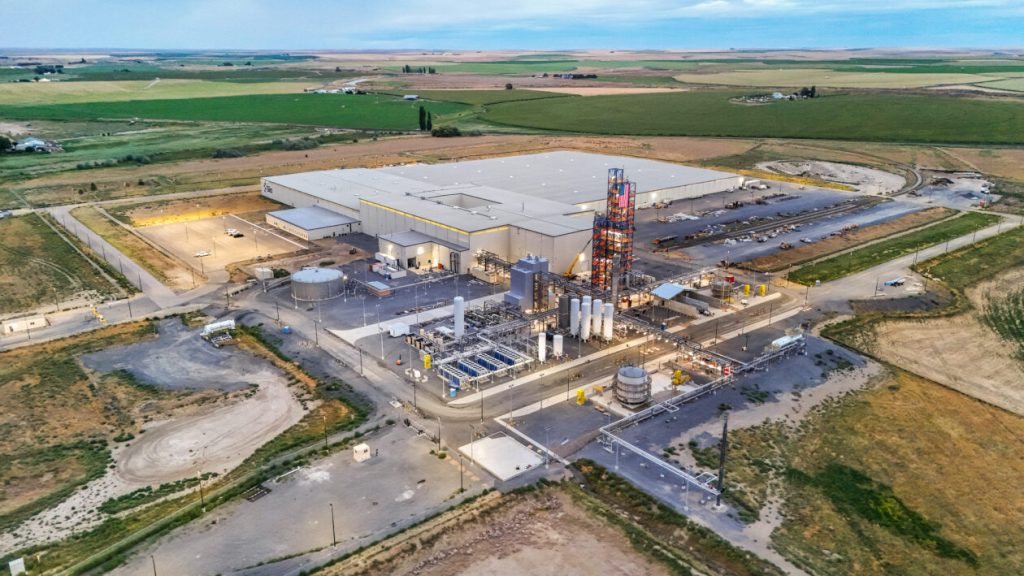Sila Launches Silicon Anode Factory in Moses Lake, Aiming to Revolutionize Battery Technology
In a significant step forward for American battery innovation, Sila has officially begun operations at its cutting-edge manufacturing facility in Moses Lake, Washington. The newly commissioned 600,000-square-foot plant, situated on a sprawling 160-acre property in Eastern Washington’s arid landscape, represents a bold move in the domestic production of advanced battery materials. This facility is dedicated to manufacturing Sila’s proprietary silicon-carbon anode material, branded as Titan Silicon, which promises to transform the performance of lithium-ion batteries that power everything from electric vehicles to smartphones. The technology’s key advantage is impressive – batteries incorporating Sila’s material can store 20% more energy than conventional batteries using traditional graphite anodes, potentially extending the range of electric vehicles and the battery life of consumer electronics.
The Moses Lake facility is starting with modest but meaningful production capacity – enough anode material to support 2 to 5 gigawatt hours of battery capacity. To put this in perspective, that’s sufficient to power tens of thousands of electric vehicles or millions of mobile devices, depending on how much graphite is replaced with Sila’s innovative material. However, the company’s ambitions stretch much further, with plans to scale up dramatically to 250 gigawatt hours by 2030. Such expansion would make this facility the world’s largest anode production plant, positioning the United States as a serious competitor in the global battery supply chain. Sila has already secured partnerships with industry giants like Mercedes-Benz and Panasonic, with deliveries to customers expected to begin as early as next year, signaling strong commercial interest in their technology.
“This is not just about building a factory. It is about closing the gap between innovation and manufacturing in America,” explained Gene Berdichevsky, Sila’s CEO and co-founder. His statement reflects the broader implications of this project beyond just commercial success. “If we do not execute, innovation will flow to places that can. We have to build here in the United States to create a self-sustaining innovation economy, ensuring that our advancements in next-generation battery technology, like silicon-carbon anodes, are not only conceived but also produced domestically at a global scale.” Berdichevsky’s perspective underscores the strategic importance of maintaining technological leadership in critical sectors like energy storage, especially as the global race for clean technology manufacturing intensifies.
The timing of the plant’s opening comes during a complex period for America’s clean energy sector, which faces uncertainty as the Trump administration has canceled funding for numerous climate-related initiatives. Nevertheless, Sila’s progress demonstrates remarkable resilience, having secured a $100 million grant from the U.S. Department of Energy in 2022 as part of the Biden administration’s efforts to strengthen domestic battery production and reduce dependence on Chinese imports. The company has shown impressive financial backing as well, raising $375 million last year specifically to complete this manufacturing facility, with total investments exceeding $1.3 billion since its founding in Alameda, California in 2011. Currently employing 400 people across its operations, with 100 dedicated to the Moses Lake plant, Sila expects to create up to 500 jobs at full capacity, partnering with local educational institutions like Big Bend Community College and Columbia Basin Technical Skills Center to develop the necessary workforce.
The Moses Lake region is emerging as something of a battery technology hub, though with mixed results. Sila competitor Group14 Technologies is constructing its own facility in the area but recently faced setbacks, including layoffs and delayed production timelines, despite securing $463 million in fresh investment this summer. Even more cautionary is the case of OneD Battery Sciences, which closed its pilot manufacturing facility in Moses Lake earlier this year and appears to have ceased operations entirely. Other Pacific Northwest battery startups, including Seattle-based Ecellix and Emerald Battery Labs, along with Oregon’s Skip Technologies and ZincFive, continue their development work in this challenging but potentially transformative sector. The varied fortunes of these companies highlight both the opportunities and risks in advanced battery manufacturing.
U.S. Representative Dan Newhouse, a Republican representing the Moses Lake area, praised the development: “This new facility is a prime example of the domestic innovation needed to end our dependency on foreign countries for advanced battery technology and produce high-quality, cutting-edge technologies that protect our supply chains here at home.” His bipartisan endorsement signals the broad recognition that battery technology represents a critical national interest beyond partisan divides. Sila’s remarkable speed in establishing this facility – breaking ground less than two years ago and already starting production – demonstrates how quickly innovation can move from concept to reality when properly supported. As the global competition for leadership in clean energy technology intensifies, Sila’s Moses Lake plant stands as a compelling example of how American innovation, backed by strategic investment and policy support, can maintain competitiveness in manufacturing sectors that will define the future of transportation, energy storage, and consumer electronics.


